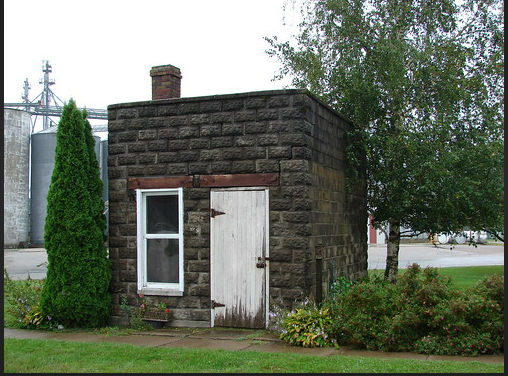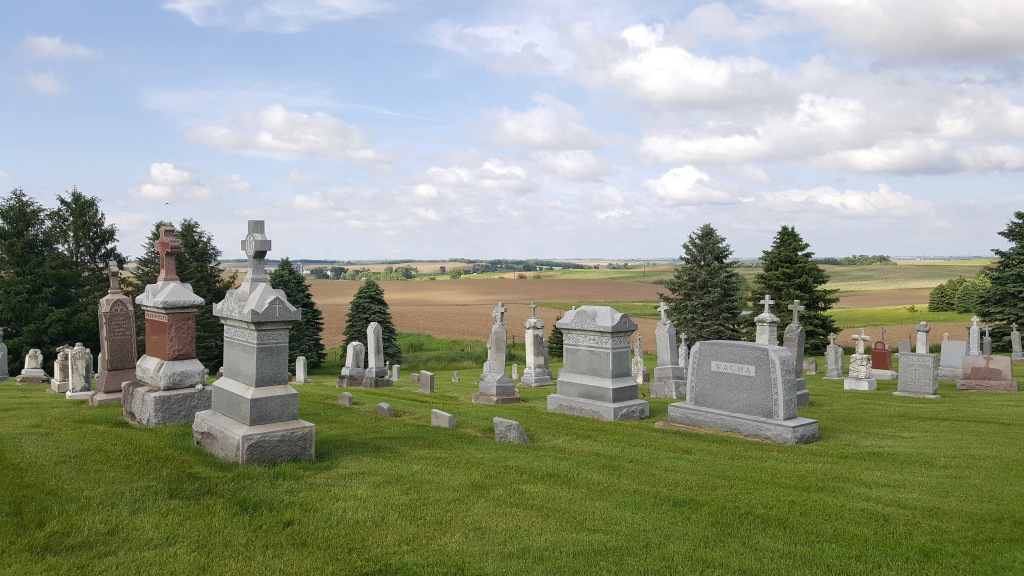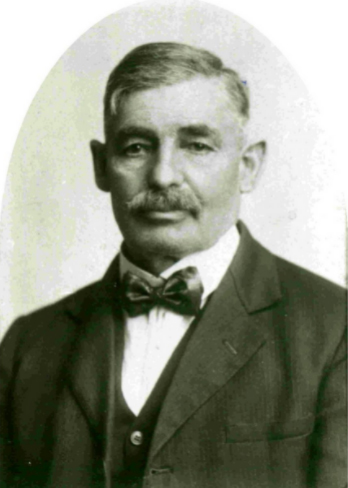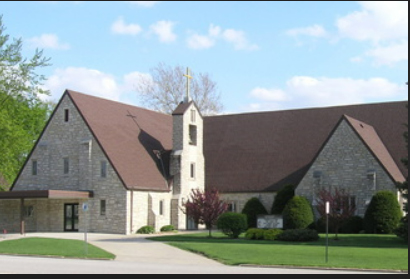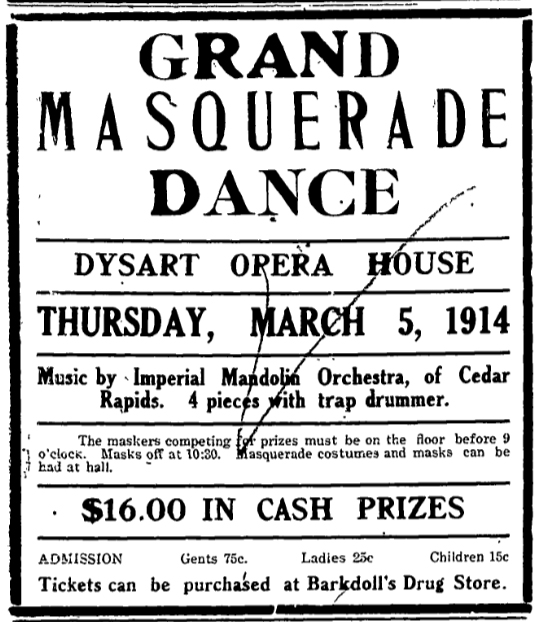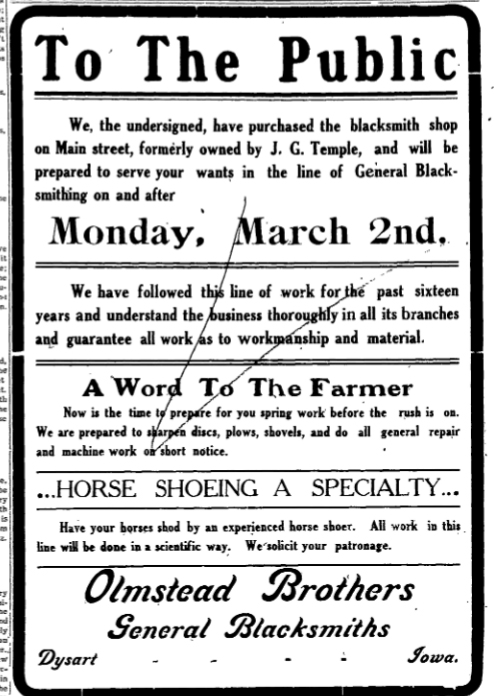The Twentieth Century Shining Parlor
New Business Sparks Protests in Des Moines and Omaha

April 8, 1914 Des Moines Tribune
With the advertisement above, as well as a short article which appeared the same day in the Des Moines Register, the people of Des Moines were informed that a new business was coming to town. It did not take long for a firestorm of words and threatened action to follow. The Register informed the populous that the shoeshining parlor would be managed by a girl and employ girl "shiners" exclusively. The shop was to be opened at 421 West Locust Street (at the corner with Fifth) with the proprietors being listed as Alber and Fenberg who were already conducting a similar business in Omaha, Nebraska.
The building at 421 West Locust Street had been advertised as in use since at least 1895 and over the years was home to several businesses. It had been used to sell clothing, gas fixtures, cash registers, woolen goods, and vacuum cleaners. In 1913 it was listed as for rent in the local paper for several month but also seems to have been used as a place to display cars.
Within two days of opening the police were receiving complaints from citizens. A headline in the Des Moines Tribune on April 10, read "Shoe Shining Shop Operated by Girls Calls Out Protest. Police, However, Say Law Probably Will Not Permit Them to Interfere."

Shoe Shine Parlor in Buffalo New York
The article stated that the shop, staffed by "fifteen white girls", who were said to have been sent from Omaha by the owner of a similar parlor there had started a storm of protests pouring into police headquarters from citizens claiming that it was altogether improper for a young woman to enter the field of the bootblack business. They called upon the Chief of Police, Ed Crawford, to close the parlor at once. The Chief stated that he likely would not be able to accommodate these requests as the parlor was not illegal and as long as the business was properly conducted, he was without options.

Members of the Des Moines Women's Club from the iowaheritage.org
"A club woman called me last night," Crawford stated. "She thought it was a horrible thing to allow girls to enter into such a business and I told her that I agreed with her sentiments and would see what could be done. " A rumor was started that the club women of Des Moines would work to close the parlor down however Mrs. F. W. Webster, president of the Federated Women's Clubs of the city denied this. "This matter has not been brought to my notice," said Mrs. Webster, "and all the adverse criticism that I have heard has been in the newspapers. I think it is a matter for the police to attend to. If it proves an objectionable feature it should, of course be abolished. If it is simply a group of girls trying to make a living, the police should protect them."

Omaha Daily News April 16, 1914
The introduction of the Twentieth Century Shining Parlor at 318 S. 15th Street in Omaha in February of 1914, reportedly drew the same types of concerns as it did in Des Moines two months later. According to the Omaha Daily News on February 8, 1914, over 800 men patronized the shop in the first day. One of the proprietors, M. Fenberg, admitted some 800 timid men ventured into his establishment between 11 o'clock when the doors opened and 6 o'clock in the evening. This location boasted fifteen "American-born white girls" who trained for a month before opening the shop. It also boasted that a woman served as manager.
The parlor featured a piano and live music. The Daily News described the experience this way:
When entering the shop, the patron was given a number up to fifteen, "a girl cashier sitting near the door calls (your number), smiles sweetly and directs you to one of the chairs. The bootblack whose number has just been called responds, also with a smile, goes to your chair and without further preliminary starts in making your shoes appear like new. Of course, the smile may be only perfunctory and not a necessary feature but is seldom overlooked."
"Although there are no regulations of the shop which the "trade" (patron) must observe someone feels that when a gentle female hand bumps against his pet corn it is decidedly bad form to say what he usually does on such occasions or kick the offending bootblack on the chin by way of caution to be more careful. "
"When your shoes are polished to the satisfaction of the bootblack, she stands at attention while you dig into your pockets for a nickel. Of course, if it is your usual custom at this stage of the process of having your shoes shines to tip the bootblack, the extra coin will not be refused. Over $15 in tips were meted out to the girl bootblacks yesterday."
One of the girls who was interviewed stated that at first, she thought she would never get used to the polish on her hands but admitted that at $15 per week in pay, it "looks too good to me to think of anything else, not to mention the tips." The proprietor, Fenberg, stated two shifts were employed so that no one person would work more than eight hours in a day.
Mr. E.O. M'Intosh (McIntosh) who appears to have been a prolific "letter to the editor" writer stated his opinion about girls doing this line of work. His comments in writing reflect the sentiments of the time about the roles that were appropriate according to gender, race and age. Historically, the job of shoe shiner had been done by people of color, young boys and Greek immigrants many of whom were recruited to America to perform this job and became indentured servants in the process. His letter prompted this response from one of the employees of the Omaha location.

Letter to the Editor from one of the Bootblackers Omaha Daily Bee February 27, 1914
In April of 1914, the Omaha City Commission ordered the parlor to remove the piano as the noise had been declared a nuisance. No orders were given the shut the parlor down, however.
Too Many Loafers
Meanwhile, back in Des Moines, it became clear that the objections to the Twentieth Century Shining Parlor had more to do with the men who were hanging around the business than the girls who were working inside. The Register reported, "The greater part of the adverse criticism that has come from the citizen in regard to the parlor is the result of the large crowds of loafers that loitered about the place (on opening day), smoking cigarettes, chewing and ofttimes entirely blocking passage on the sidewalk in front of the building. A piano going on the inside evidently attracted the loafers and they made it their headquarters during most of the day."

The Police Judge, Utterback, made it clear that personally he would like to see the business closed as it "had a destructive moral effect upon the city" but would close the business only if it was legally warranted.
Within a week, the Chief of Police was reporting that he had received no adcditional complaints about the shop and the number of men who were loitering in front of the shop had dwindled significantly. While things settled down for the employees in Des Moines, the girls in Omaha continued to face undue scrutiny and abuse as evidenced by this Letter to the Editor.

Omaha Daily News May 15, 1914
By the middle of June 1914, the shop in Des Moines was closed after only three months in business. The Des Moines Tribune on June 23, 1914, announced the closure. "The Twentieth Century Shining Parlor managed by Miss Ethel Alber of 100 West Second Street, yesterday morning closed its doors. The girls employed were all from Omaha and left for that city last night to work at that location." Inability to pay expenses was given as the reason for the suspension of the business. By the time of the closure, only six girls remained in their employment.

The fate of the Omaha shop is unknown. By 1917 the building was being used for another venture and so one can assume they too were out of business at least by then. Internet searches did not help to clarify the identify of M. Fenberg, Ethel Alber or the names of any of the women who were pioneers in the long process of helping women find new roles in a society that was largely closed to them.






















































































